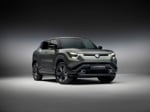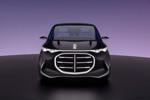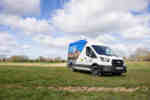As the euro's launch fast approaches and the movement of used cars around Europe increases, there can be little doubt that used car values will soon start to harmonise.
Once the euro starts in earnest any variations in price will become more transparent and the gap between different countries will get smaller as a result. Many think that it will eventually close.
However, there are going to be many discrepancies between cars from different manufacturers as some values could be higher in some countries compared to others.
The reason for this is simple: certain cars are more popular in some countries than they are in others. Some French cars, for example, are more sought after in France than in neighbouring areas.
So the movement around different countries will inevitably occur, as traders instinctively find the best places for individual models.
In the short term, values will vary slightly across different regions according to the popularity of the manufacturer, but as time goes by there could be one price throughout Europe as the euro breaks down borders.
The kilometres covered and age of the car are also important factors in deciding where a vehicle may end up.
Again some countries will happily accept those that have been to the moon and back, while others really do not seem comfortable with them and only like driving around in those with a minimal distance on the clock.
But the prices of these too will level out eventually because as awareness grows, those that fetch poor money in one country will inevitably be moved to another where they are a more attractive proposition.
-
As the year draws on and the European motor shows are nearly over, it is always interesting to look at all the new models that will go on sale across the world.
With last month's Frankfurt show launching an amazing number of new offerings, you have to ponder which will do well and which won't, particularly when they get into the used market place.
It is a fairly safe bet that the new Ford Fiesta and Volkswagen Polo will be popular in all European markets.
The all-new Nissan Primera will have mixed fortunes, as some markets will take to its shape and others will not.
Germany, for example, tends to prefer traditional German vehicles and unusual Japanese cars can struggle in France.
The Mercedes-Benz Vaneo, which is a cross between an A-class, a people-carrier and a kombi, will have a tough time on the used market in some countries.
Its quirky styling will probably make it unpopular in the UK, Holland and Austria. In Italy it will go head to head with the Fiat Multipla, which is likely to win more sales. However, in countries such as Spain and Portugal, they will be very desirable.
The new BMW 7-series is more of a revolution than an evolution, which is unlike a German car manufacturer. How it will be received as a used car, and whether it will perform better than the outgoing model, remains to be seen.
















Login to comment
Comments
No comments have been made yet.